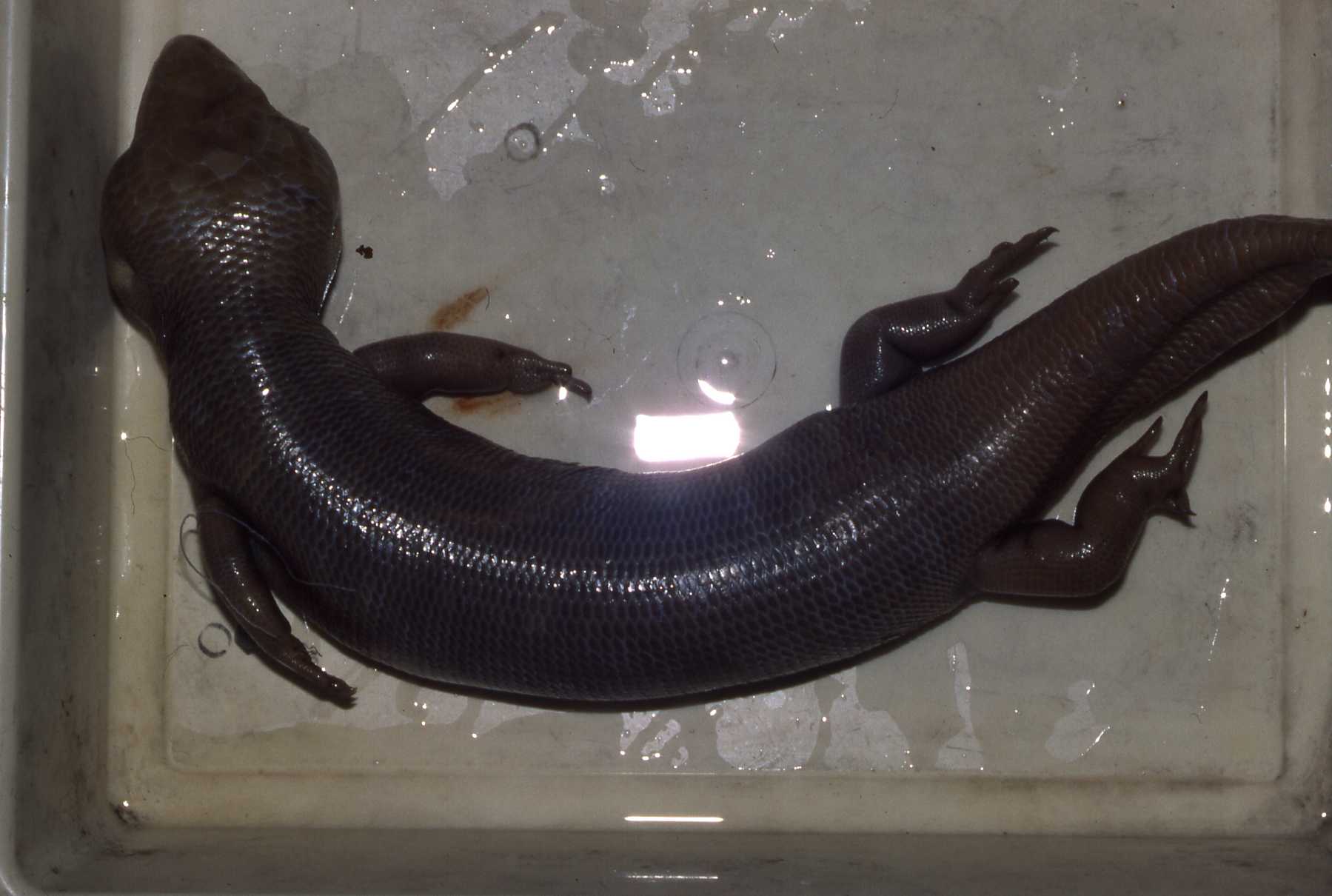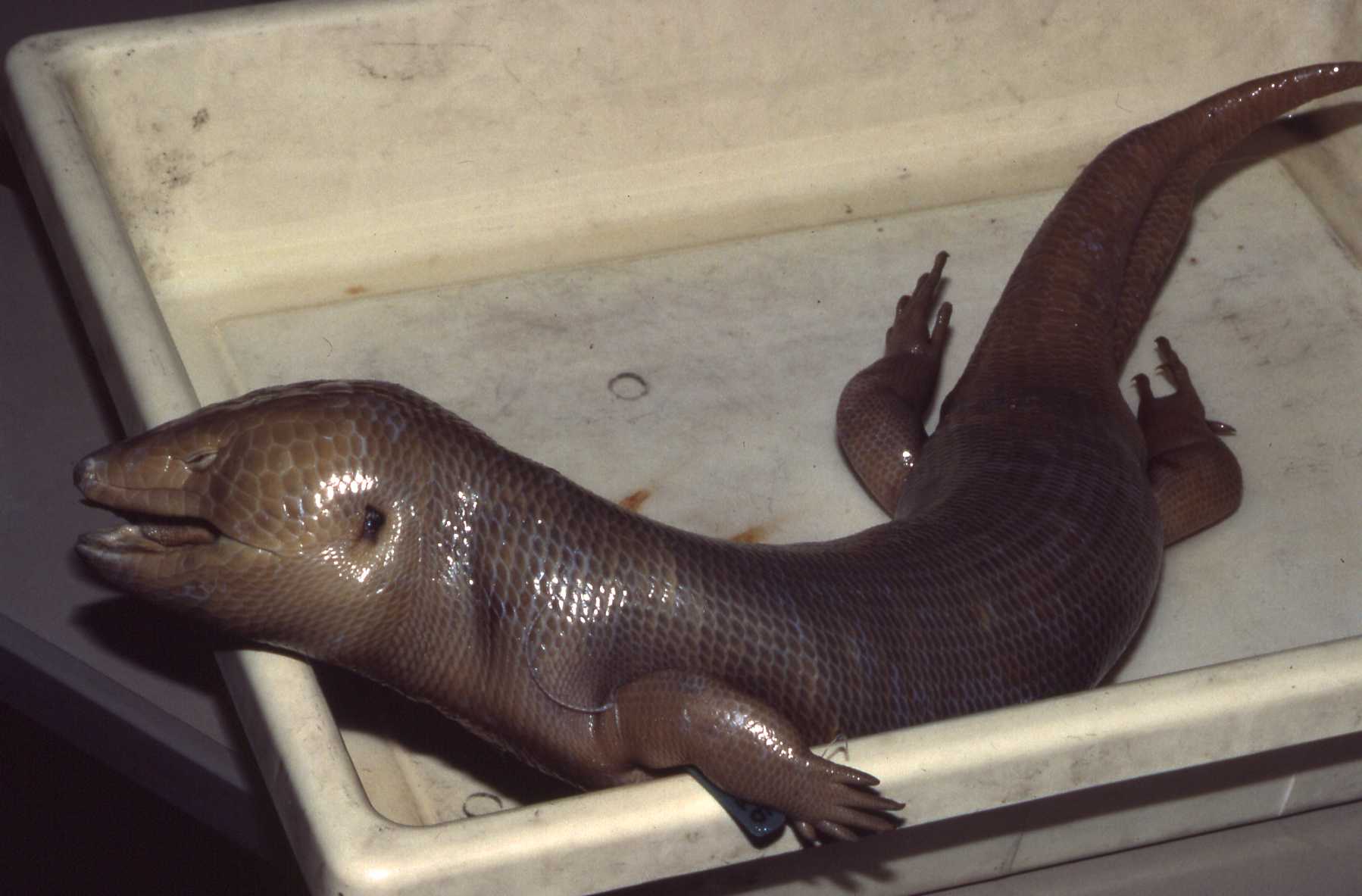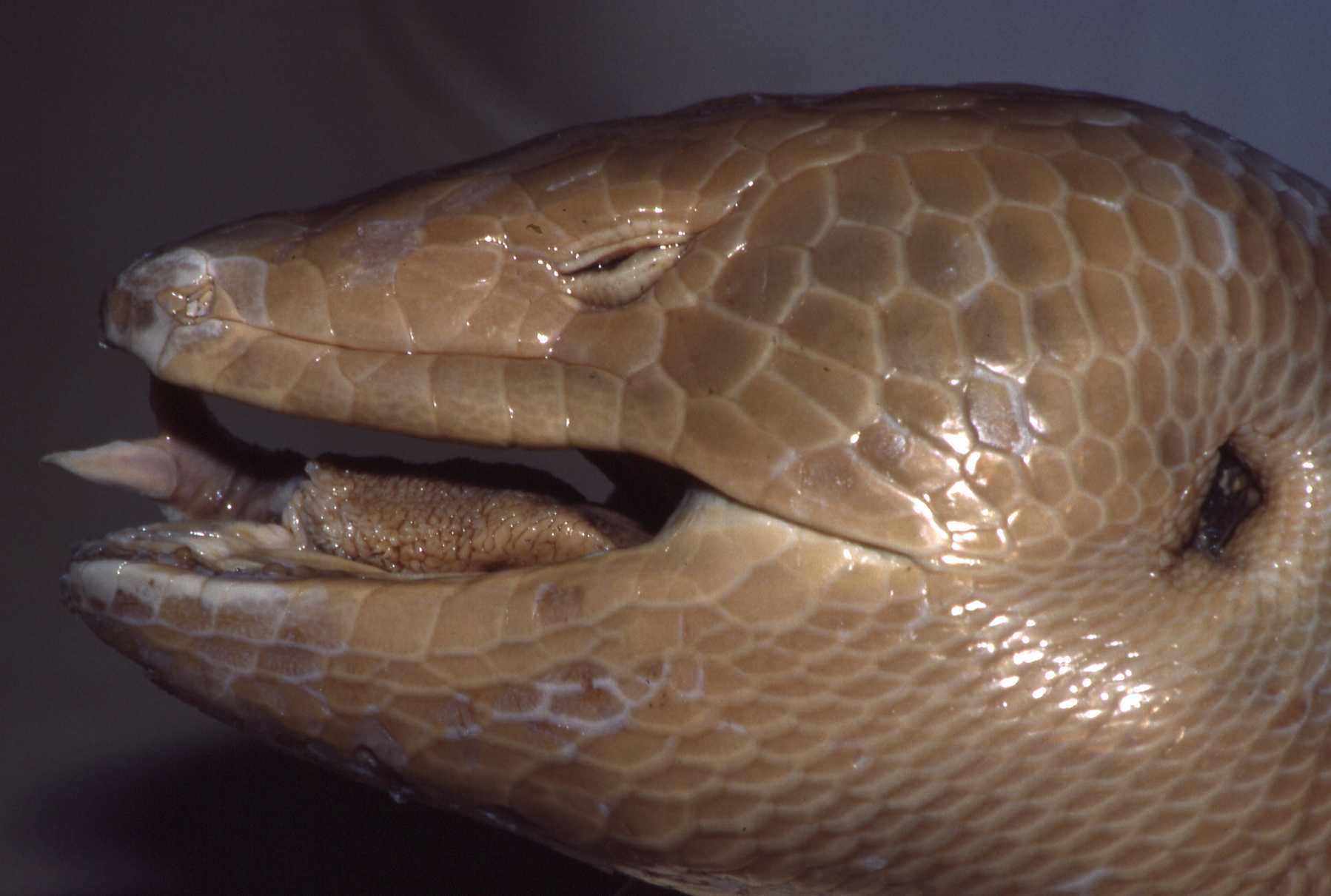Celestus occiduus (Shaw, 1802:288)
Jamaica giant galliwasp, Sinking galliwasp, Jamaican giant forest lizard, Yellow giant forest lizard
Taxonomy & Nomenclature
Synonyms: Lacerta Occidua Shaw, 1802:288; Scincus gallivasp Daudin, 1802:239; Diploglossus Shawii Duméril & Bibron, 1839:590; Diploglossus occiduus Boulenger, 1885:290; Diploglossus impressus Boulenger, 1885:291; Celestus impressus Barbour, 1910:298; Macrogongylus brauni Werner, 1901:299
Conservation Status
Extinct (WCMC, 1992:210)
Last record: 1840 (WCMC, 1992:210); 1840's (Ineich & Böhme, 2024); 1851 (Wilson & Hedges, 2020; Martin et al., 2023); 28 December 1938 (Schools & Hedges, 2024)
IUCN RedList status: Critically Endangered (Possibly Extinct)
Distribution
Jamaica
Biology & Ecology
Hypodigm
Holotype: BMNH XV.115A [not BMNH XV.118A as reported by Schwartz & Henderson (1991) and Schools & Hedges (2021)]
Other specimens:
BMNH 1970.1816
GLAHM 117505 ("single large specimen F[emale]", see here)
Specimens in English museums
Please note that there is some overlap between the specimens listed below and those listed above. This list was obtained by Melanie Nayyal in correspondence (email) with the NHM, London.
BMNH 1961.1851
BMNH 1863.2.21.17
BMNH 1970.1816
BMNH 1946.8.3.82
Media

Above: BMNH 1970.1816. ©1984 Simon Tonge. Reproduced with permission.

Above: BMNH 1970.1816. ©1984 Simon Tonge. Reproduced with permission.

Above: BMNH 1970.1816. ©1984 Simon Tonge. Reproduced with permission.
References
Original scientific description:
Shaw, G. (1802). General zoology or systematic natural history. Vol. 3. Thomas Davison, London, viii + 312 pp.
Other references:
Barbour, T. (1910). Notes on the herpetology of Jamaica. Bull. Mus. Comp. Zool. Harvard 52: 273-301.
Barbour, T. (1930). A list of Antillean reptiles and amphibians. Zoologica, New York 11: 61-116.
Barbour, T. (1935). Second list of Antillean reptiles and amphibians. Zoologica, New York 19: 77-142.
Barbour, T. (1937). Third list of Antillean reptiles and amphibians. Bulletin of the Museum of Comparative Zoology 82: 77-166.
Böhme, W. and Fischer, E. (1998). Verification of species identity and geographic origin of a specimen of an extinct giant lizard (Reptilia: Anguidae: Celestus occiduus) based on stomach contents, with comments on other undiscovered large lizards. Cryptozoology 13: 23-37.
Boulenger, G. A. (1885). Catalogue of the lizards in the British Museum (Natural History). Vol. 2, Second edition. London, xiii + 497 pp.
Day, David. (1981). The Doomsday Book of Animals: A Natural History of Vanished Species. New York, N.Y.: The Viking Press.
Dumeril, A. M. C. and Bibron, G. (1839). Erpétologie générale, ou, Histoire naturelle complète des reptiles. Vol. 5. Roret / Fain et Thunot, Paris. 871 pp.
Grant, Chapman. (1940a). II. The reptiles, pp. 61-148. In: Lynn, W. G. & Grant, C. (Eds.), The Herpetology of Jamaica. The Institute of Jamaica, Kingston.
Grant, Chapman. (1951). The Specific Characters of the Celesti, with the Description of a New Species of Celestus (Sauria, Anguidae). Copeia 1951: 67-69. [considers C. impressus a synonym of C. occiduus]
Grant, Chapman and Lynn, W. Gardner. (1940). The Herpetology of Jamaica. Institute of Jamaica.
Hedges, S. Blair, Powell, R., Henderson, R. W., Hanson, S. and Murphy, J. C. (2019). Definition of the Caribbean Islands biogeographic region, with checklist and recommendations for standardized common names of amphibians and reptiles. Caribbean Herpetology 67: 1-53. https://doi.org/10.31611/ch.67
Henderson, R.W. and Powell, R. 2009. Natural History of West Indian Reptiles and Amphibians. University Press of Florida, Gainesville, Florida, USA.
Ineich, Ivan and Böhme, Wolfgang. (2024). Was it premature to declare the giant Tongan Ground Skink Tachygyia microlepis extinct? Salamandra 60(1): 82-93.
Landestoy, M., Schools, M. and Hedges, S. Blair. (2022). A new genus and species of Caribbean forest lizard (Diploglossidae; Celestinae) from southern Hispaniola. Zootaxa 5219(3): 201-226.
Langner, Ch. (2019). Ich komme Dir auf die Schliche! Verkanntes Schleichenvolk – die interessanten Echsen der Familie Anguidae. Reptilia (Münster) 24(136): 16-27.
Martin, Thomas E., Bennett, Gareth C., Fairbairn, Andrew J. and Mooers, A. Ø. (2023). ‘Lost’ taxa and their conservation implications. Animal Conservation 26(1): 14-24. https://doi.org/10.1111/acv.12788 [Appendix S2 (1617 taxa not seen >10 years); Appendix S3 (562 taxa not seen >50 years)]
Meiri, Shai et al. (2018). Extinct, obscure or imaginary: the lizard species with the smallest ranges. Diversity and Distributions 24(2): 262-273. https://doi.org/10.1111/ddi.12678
Mittermeier, Russell A. (1972). Jamaica’s Endangered Species. Oryx 11(4): 258-262.
Powell, Robert and Henderson, Robert W. (2012). Island lists of West Indian amphibians and reptiles. Bulletin of the Florida Museum of Natural History 51(2): 85-166. [considers this taxon as possibly extinct]
Regalado, Pedro Galán. (2015). Los Anfibios y Reptiles Extinguidos: Herpetofauna Desaparecida Desde el Año 1500. Monografías de la Universidade da Coruña 155: 1-509.
Ruthven, Alexander G. (1920). Large Specimens of Two Jamaican Reptiles. Copeia 80: 21-22.
Schools, Molly and Hedges, S. Blair. (2021). Phylogenetics, classification, and biogeography of the Neotropical forest lizards (Squamata, Diploglossidae). Zootaxa 4974(2): 201-257. https://doi.org/10.11646/zootaxa.4974.2.1
Schools, Molly and Hedges, S. Blair. (2024). A new forest lizard fauna from Caribbean islands (Squamata, Diploglossidae, Celestinae). Zootaxa 5554(1): 1-306. https://doi.org/10.11646/zootaxa.5554.1.1
Schwartz, Albert. (1970). A new species of large Diploglossus (Sauria: Anguidae) from Hispaniola. Proc. Biol. Soc. Washington 82: 777-787.
Schwartz, A. and Henderson, R. W. (1991). Amphibians and reptiles of the West Indies: descriptions, distributions, and natural history. University of Florida Press, Gainesville, Florida. 720 pp.
Uetz, P. et. al., The Reptile Database, http://www.reptile-database.org, accessed December 11, 2010.
Wilson, B. S. (2011). Conservation of Jamaican amphibians and reptiles, pp. 273-310. In: A. Hailey, B. Wilson and J. Horrocks (eds), Conservation of Caribbean Island Herpetofaunas. Volume 2: Regional Accounts of the West Indies. Leiden: Brill.
Wilson, B. S. and Hedges, S. Blair. (2020). Celestus occiduus (amended version of 2017 assessment). The IUCN Red List of Threatened Species 2020: e.T4097A181348221. https://dx.doi.org/10.2305/IUCN.UK.2020-3.RLTS.T4097A181348221.en. Downloaded on 01 March 2021.
WCMC (World Conservation Monitoring Centre). (1992). Global Biodiversity: Status of the Earth's living resources. London: Chapman & Hall. xx + 594 pp.
World Conservation Monitoring Centre. (1996). Celestus occiduus. In: IUCN 2011. IUCN Red List of Threatened Species. Version 2011.2. (http://www.iucnredlist.org). Downloaded on 17 April 2012.
https://extinctanimals.proboards.com/thread/10085/jamaican-giant-galliwasp
